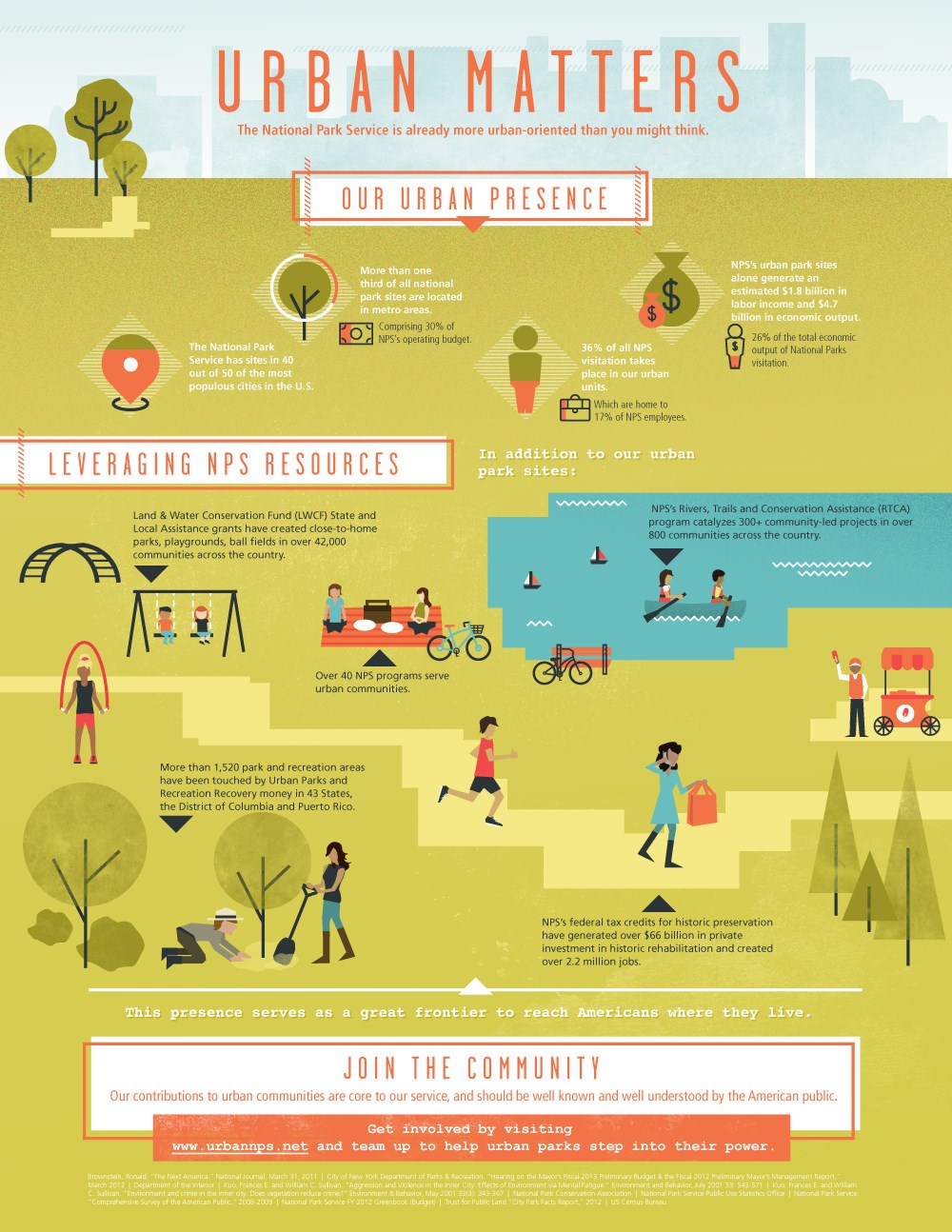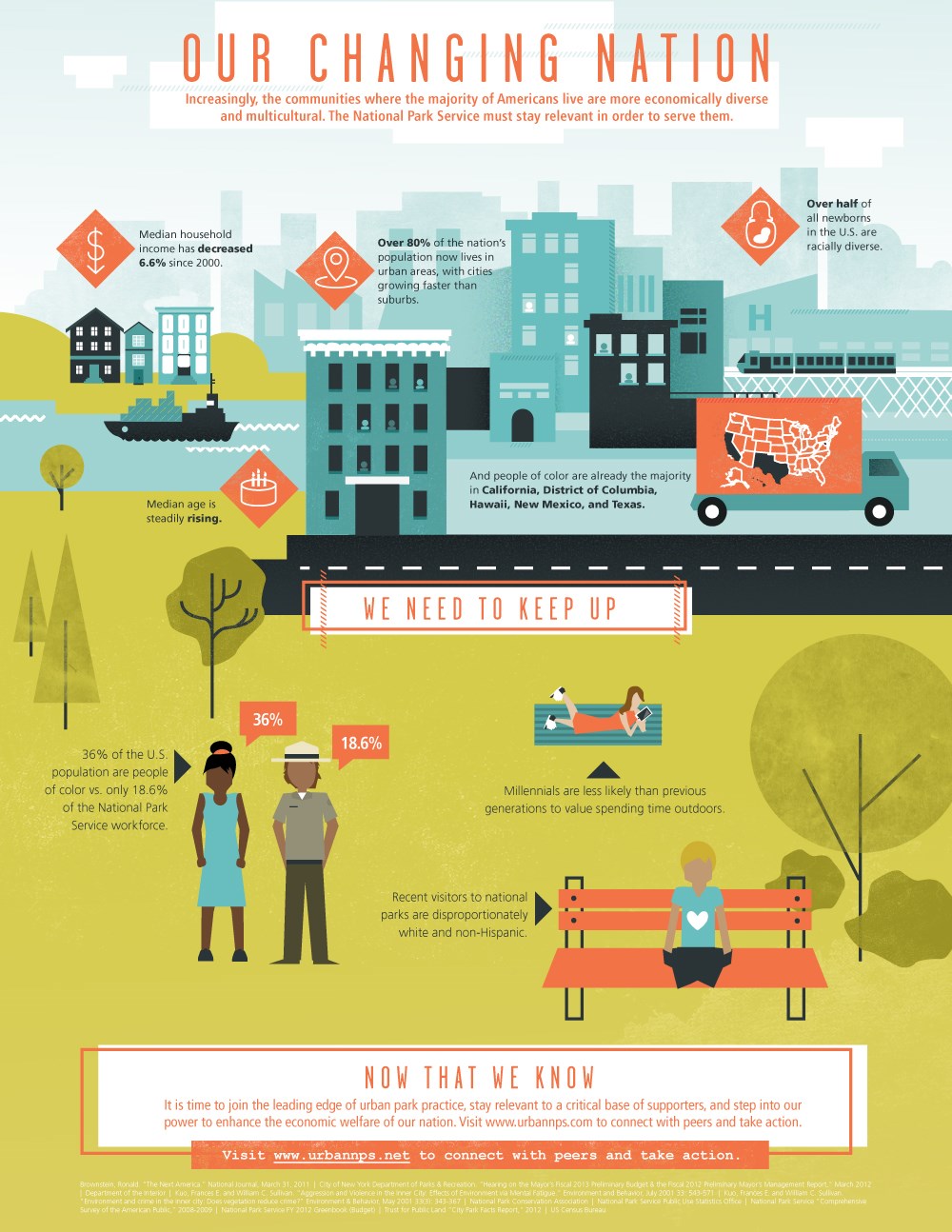Since the National Park Service was established, the demographics of the U.S. have changed dramatically. In 1916, the nation was 50% urbanized compared to today - over 80%. These demographic changes affect how parks are valued, how they are visited, what kinds of development are appropriate, and who will support the parks.
Indisputably, much of the success of the National Park Service in coming years will depend on its ability to diversify and prove its relevancy to new populations. Strengthening the agency's external relationships, diversifying its workforce, and aligning with community-driven agendas that relate to the NPS mission are among the many strategies required to help NPS create relationships with new audiences. In addition to protecting this NPS legacy, the diverse system of park units and the extensive portfolio of community, cultural, and lands assistance programs within the NPS can be leveraged to address challenges cities presently face.
The following graphics take a compelling look at ways the National Park Service is poised to pivot toward an increasingly urban, increasingly diverse citizenry.


Last updated: September 12, 2014
